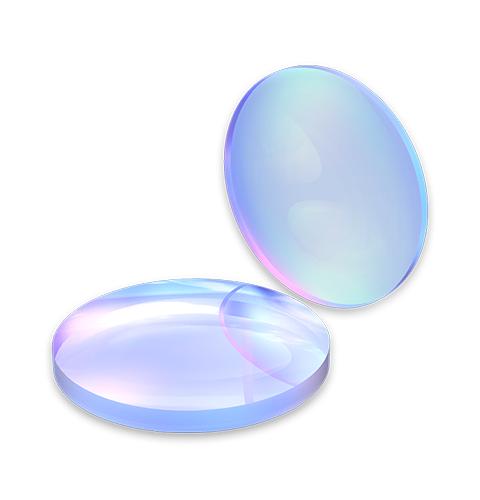Calcium Fluoride (CaF2)Bi-Convex Lenses
Bi-convex lenses (or double-convex lenses) perform better when the object is closer to the lens and the conjugate ratio is low. When the object and image distance are equal (1:1 magnification), not only is spherical aberration minimized, but also distortion, and chromatic aberration are canceled due to the symmetry. So they are best choices when object and image are at absolute conjugate ratios close to 1:1 with diverging input beams. As a rule of thumb, bi-convex lenses perform well within minimum aberration at conjugate ratios between 5:1 and 1:5, they are used fo relay imaging (Real Object and Image) applications. Outside this range, plano-convex lenses are usually more suitable.
Due to its high transmission from 0.18 µm to 8.0 μm, CaF2 exhibits a low refractive index varying from 1.35 to 1.51 and is commonly used for applications requiring high transmission in the infrared and ultraviolet spectral ranges. Calcium fluoride is also fairly chemically inert and offers superior hardness compared to its barium fluoride, and magnesium fluoride cousins. Paralight Optics offers Calcium Fluoride (CaF2) Bi-Convex Lenses available with a broadband AR coating optimized for the 2 µm to 5 μm spectral range deposited on both surfaces. This coating greatly reduces the average reflectance of the substrate less than 1.25%, yielding an average transmission in excess of 95% over the entire AR coating range. Check the following Graphs for your references.
Plano-Convex Lenses
Professional technical engineer dedicated to guide you
According to your actual needs, choose the most reasonable overall design and planning procedures
